Nissan GT-R and Skyline GT-R: Buyer's Guide to Every Generation
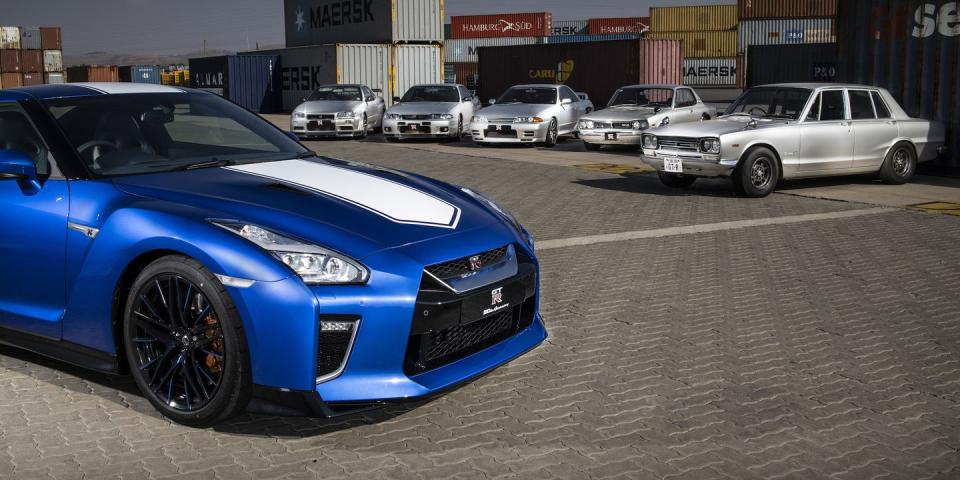
Overview
On March 5, 1964, a boxy Japanese sedan passed a Porsche at Suzuka. The hometown crowd of 170,000 rose to their feet, roaring their approval. There was much to cheer about: The underdog Skyline had slipped past the sleek, mid-engined Porsche 904, proving that the pinnacle of German engineering could be bested. It was a moment for Japan to take pride in her fledgling automotive industry.
If you look up the race results for the 1964 Japanese Grand Prix, you’ll find that Porsche won the race. Tetsu Ikazawa, the driver of the Skyline, ended up third on the podium. Ikazawa went on to have a successful career, the highlights of which include him becoming the only Japanese Porsche factory driver.
That moment, that pass, is really where the GT-R story begins. That Skyline was not a GT-R. It wasn't even under the Nissan corporate umbrella. But it foreshadowed a mighty legend. The sedans and coupes that followed it immediately established a dominant racing legacy, and thanks in part to the Sony Playstation, would go on to become objects of desire all over the world.
And now you want one. Here's your guide to the machines that carry the pride of Japan in three little letters.
First Generation (K/PGC10)
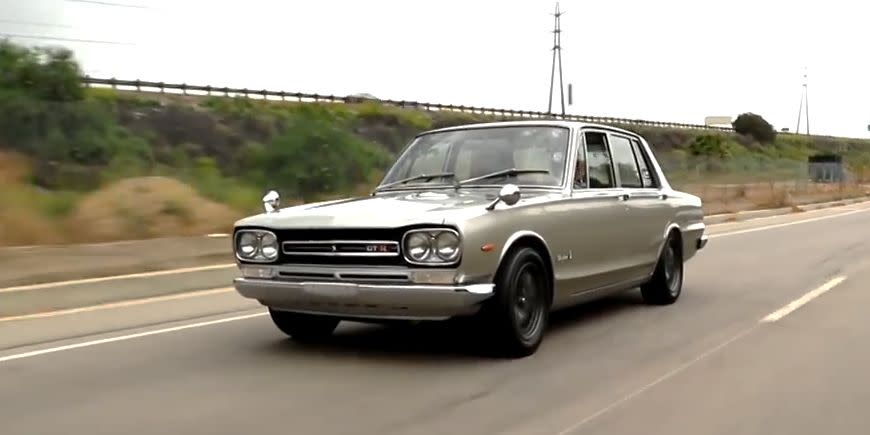
The recipe for the first GT-R is analogous to another three-letter car, the Pontiac GTO. Before they were snapped up by Nissan, the Prince Motor Company took the engine from their larger Gloria sedan and stuffed it into the nose of the smaller Skyline.
Once under the Nissan corporate umbrella, that recipe had been refined somewhat. The Skyline GT-R was a better-handling car than its predecessor from our story’s introduction. If you squint, the sedan looks a bit like a longer, wider Datsun 510, and like the 510, the GT-R was a pretty basic, straightforward affair.
The interior of the first GT-R was spartan, with bucket seats and a three-spoke steering wheel. The chassis had a semi-trailing rear and independent front suspension. Brakes were discs up front and drums in the back.
Where things get a bit special is under the hood, where you find the S20 inline-six. With four valves per cylinder, double-overhead cams, and triple Mikuni N 40 carburetors, the S20 was a race-derived powerhouse, essentially a production version of the motor found in the mid-engined Prince R380 racing car. Factory horsepower was 158 hp at 7000 rpm, but tuners soon had that above the 200-hp mark. To add another analogy to the mix, the first Skyline GT-R was essentially Nissan's E28 M5 moment.
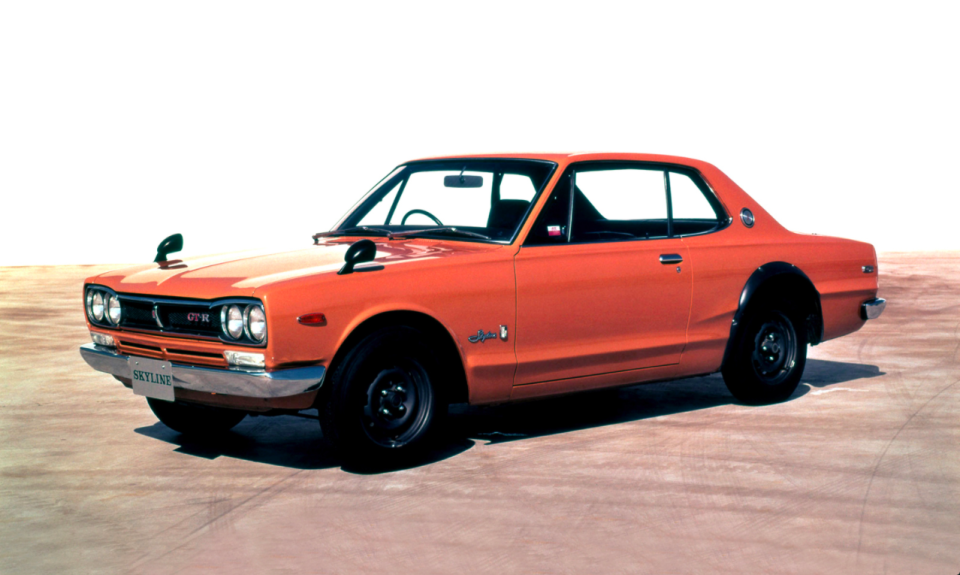
-The father of the first Skyline GT-R was Shin'ichrō Sakurai. A brilliant engineer who had been with the Prince Motor Company since their founding days, Sakurai was an uncompromising boss. Naganori Ito, an engineer who apprenticed under Sakurai, said, “I’ve heard that lion parents kicks their cubs down into the abyss of a ravine, and raise only the kids who can climb back up. The Sakurai School was just like a Lion School.” Ito would later become the lead engineer on the R32 Skyline GT-R.
-The hakosuka nickname refers to all Skylines of this generation. The word combines “hako,” meaning box, and the first half of “sukairain,” the Japanese for scenic mountain road, from which the Skyline takes its name. The nickname is pronounced hako-ska.
-A coupe arrived in 1970. The KPGC10 is prettier than the sedan and just as capable. Just under 2000 of both models were produced, with the bulk of them being the coupes.
-In racing trim, the first GT-Rs cleaned up. In the first three years of production, Skyline GT-Rs won 49 of the first 50 races they were entered in, eventually chalking up 52 total victories. Curb weights were around the 2100 lb mark, and with fuel injection added, the S30 made just under 230 hp at 8400 rpm. Some Nissan factory drivers reported preferring the handling of the Skyline to that of the Fairlady Z.
-Real hakosuka GT-Rs aren't cheap. No GT-R is much of a bargain, and the first-generation cars have demanded six-figure price tags for years. Values really spiked last year, so if you're an ordinary enthusiast you might want to consider a tribute build.
Of note:
1969 – The Skyline GT-R went on sale in Japan in February of 1969. It was only available at specialist dealers called Nissan Prince Stores. Three months later, it won its first race.
1970 – The hardtop coupe KPGC10 arrives in the fall. These were slightly lighter than the sedans, and inadvertently set off rumblings within Nissan. Ex-Prince racing engineers were miffed that Nissan had put “their” S20 into the Z432 and Z432R Fairladys. The two coupes did not often compete against each other at the track, but there was internal friction.
1972 – At the rain-drenched Fuji 300km race on March 20, a KPGC10 GT-R coupe was driven by Kunimitsu Takahashi. Considered the “Father of Drifting,” Takahashi raced successfully at every level including F1 and the Isle of Man TT. At Fuji, he gave the GT-R its 50th victory.
Second Generation (KPGC110)
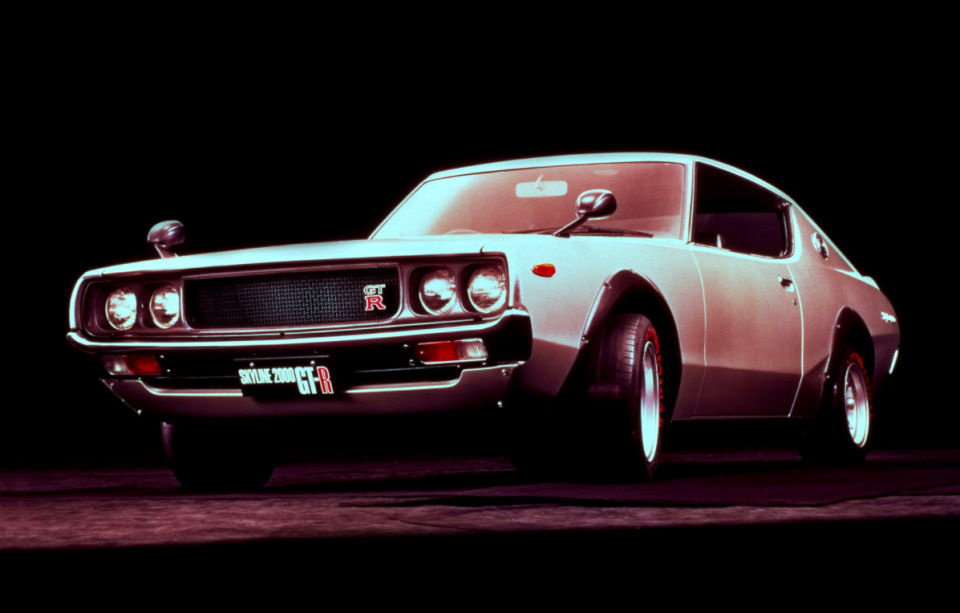
The KPGC110 is often lumped together with the hakosuka Skyline GT-Rs because so few of them were made. Production began in January of 1973 and ended in April of that same year, with 197 cars built. Grand opening, grand closing.
Just as in the U.S. market, emissions requirements were putting an end to some of the fire-breathing machinery of the 1960s, and the KPGC110 Skyline GT-R became something of a historical footnote. It never raced, and as a result is sometimes called the Phantom GT-R.
Still, it's an interesting car, and dozens of tribute builds have been made over the years. You might not see one outside of a museum, but that doesn't mean you can't make a clone out of a more conventional Skyline of this generation.
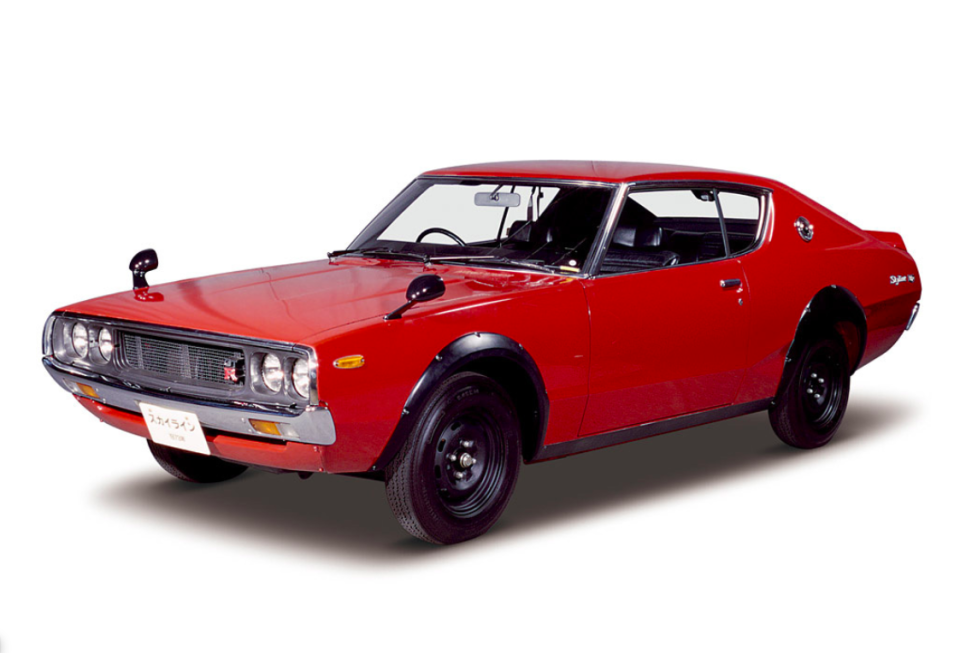
-It's powered by the same engine. The KPGC110's S20 straight-six produces near-identical power and torque outputs as the first Skyline GT-Rs.
-The second-gen Skyline is called the Kenmeri, after an ad campaign. The fictional Ken and Mary, played by the Japanese Jimmy Zanai and American Diane Krey, “drove” a blue 2000GT-X all over Japan during the early 1970s. In reality, neither actor was old enough to drive. “Kenmeri” is both a portmanteau of their two names, and also reverses to form a phonetic “American,” a nod to the second-gen Skyline's Detroit influenced-styling.
-It's the first Japanese-market car to offer disc brakes at all four corners. The Kenmeri GT-R had the same basic engine and layout as its race-winning ancestors, but did feature some upgrades.
Of note:
1972 – Nissan showed off a flared-out KPGC110 at the Tokyo Motor Show, bearing the number 73 on its flank. The car never raced, nor did any second-gen GT-R, but it was restored to its original glory decades later and is sometimes shown at Nissan events.
2020 – In January, a genuine KPGC110 sold for an eye-watering $455,830. Prices have gone up since then.
Third Generation (R32)

There were plenty of other Skylines between 1973 and 1989, including some fairly tasty performance versions, but the GT-R badge took a long hiatus. Happily, it came back in a burst of fire-spitting turbocharged rage.
In many ways, the R32 is the GT-R. It's the one that picked up the Godzilla nickname as it thumped the competition in Australian touring car racing. It took the screaming straight-six architecture of the original, boosted it to hell, and employed all-wheel-drive to get the power down. Everybody wanted it.
Hiroshi Tamura, Nissan's product specialist on the R35 GT-R and now the new Z, took a twenty-five-year loan for his own personal R32 GT-R, which he still owns. It makes about 600 whp. More power is on the table, but the R32 GT-R was basically Nissan's Mk IV Supra Turbo moment right out of the gate.
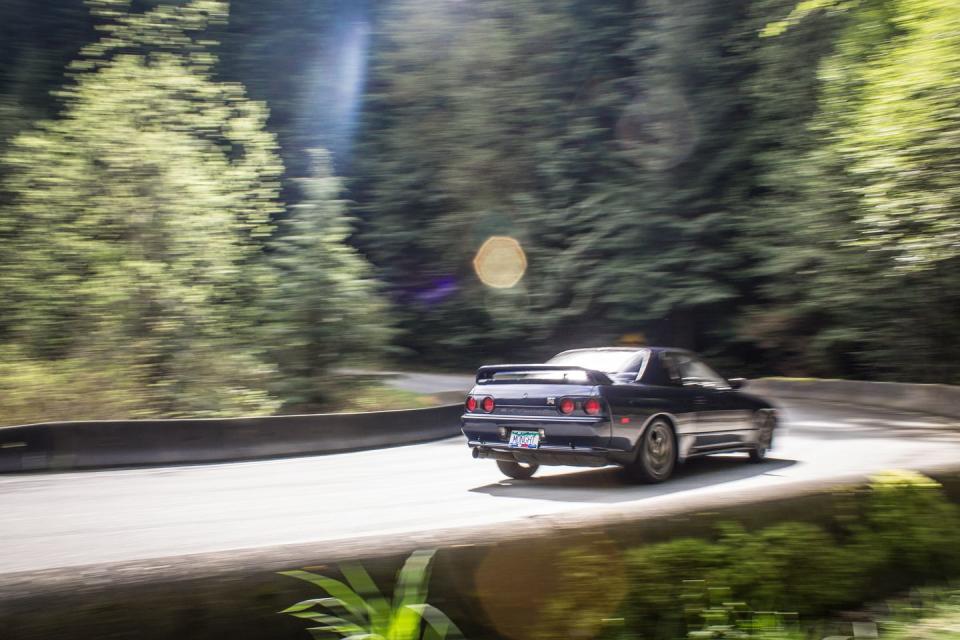
-They're all right hand-drive. All R32 GT-Rs left the factory with the steering wheel on the right. However, it is possible to convert one to left-hand-drive using a Nissan Bluebird dashboard and other parts.
-The all-wheel-drive system doesn't always drive all the wheels. Nissan's Advanced Total Traction Engineering System for All-Terrain (ATTESA) features an electronically controlled torque split (ATTESA E-TS) in the R32 GT-R. The transmission functions like a full rear-wheel-drive manual transmission, very similar to that of a 300ZX Twin-Turbo, but is capable of apportioning torque to the front wheels if wheelslip is detected. As the years went by, improvements in sensor accuracy gave the GT-R more grip.
-Real R32 GT-Rs have a unique VIN. Engine swaps into lowlier Skyline trims aren't uncommon. If you're looking at a genuine GT-R, its VIN begins with BNR32.
-Stock versions fetch the most money. R32 GT-Rs aren't rare, with nearly 44,000 produced over the years, but prices have shot up significantly. Unmodified examples are hard to find, and a lot R32s were well-used in period. Good condition cars seem to be floating around the $50,000 mark.
-There are five main variants. GT-R models are an otaku's paradise of specialist knowledge, especially in the later R33 and R34 versions. For the R32, things can be simplified to the standard and later V-Spec and V-Spec II models and the much rarer Nismo and N1 variants. The latter were lightweight homologation specials built for racing and came without air conditioning and ABS. Towards the end of the run you could buy an R32 GT-R V-Spec II N1, which sounds like the model code for a laser printer to a normal person, but should get any Skyline fan's heart beating quickly.
-The factory power rating was a lie. Japan's automotive manufacturers had an unofficial agreement to not sell a car with more than 280PS (276 hp). A special edition Skyline GT-R would eventually break this rule (more on that later), but Nissan rated all the R32 variants at 276 hp. Most were making at least 300 hp before tuning. The parallel twin-turbo engine, code RB26DETT, makes peak power at 6800 rpm and redlines at 8000 rpm.
-All-wheel drive and active steering can be defeated. Pulling a fuse defeats the R32's all-wheel-drive, making it rear-drive only; this is sometimes done to cover up an issue, so watch for it. The rear wheel active-steering, known as HICAS (High Capacity Actively Controlled Steering), is often locked out by drivers looking for better feel.
Of note:
1989 – The R32 GT-R debuts in August. Development is overseen by Naganori Ito, Sakurai's protege. The Japanese television show Best Motoring gets it around the Nürburgring in eight minutes and 22.38 seconds, giving the R32 GT-R the fastest production car lap at the time.
1990 – The GT-R Nismo arrives in February. 560 were built in total, all painted Gun Grey Metallic (KH3). Nismo versions are lighter, and get metal turbocharger impeller blades instead of ceramic.
1991 – Built to race, the R32 set about demolishing the overseas competition, arriving in Australian Touring Car Championship and winning immediately. It won the 1991 and 1992 championships, as well as the Bathurst 1000 in both years. An R32 GT-R would also win the Spa 24.
1993 – Winning 29 races from 29 starts, the R32 GT-R completes its sweep of the Japanese Grand Touring Car Championship (JGTCC) series with a fifth straight championship title.
1994 – Production of the R32 GT-R ends in November. The previous month, a blue Cal sonic-liveried R32 GT-R took the top GT1 class championship in what would become the Super GT series.
Fourth Generation (R33)
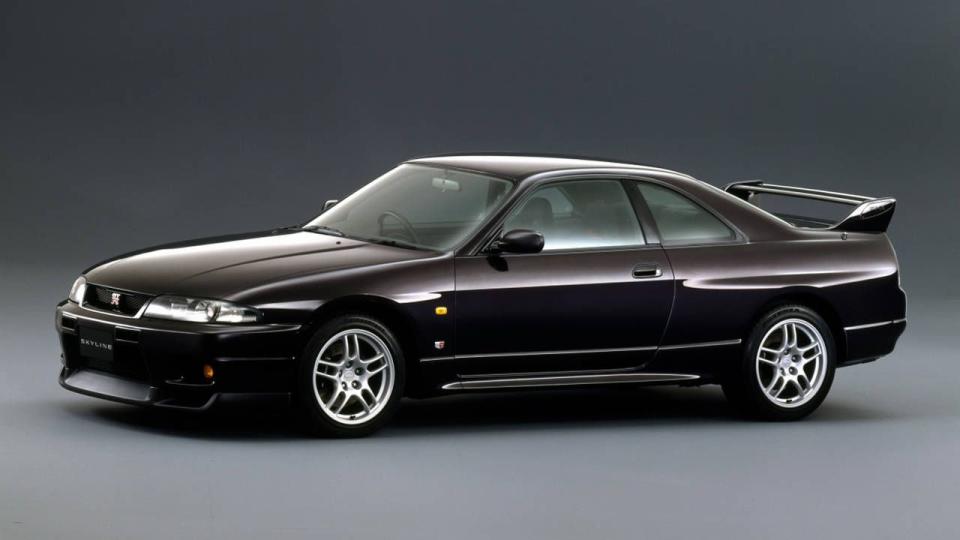
The R33 GT-R is, like the 996 Porsche 911 Turbo or the NC Miata, the One Where The Opinions Are Wrong. Of the modern R32/33/34 trifecta, it's the heaviest, so people tend to either root for the raw-feeling R32 or cleave to the Paul-Walker-owned R34.
The fact is that the R33 benefited from a great deal of development over the R32, and is (whisper it) just as much fun to drive quickly as an R34. When the R33 was being developed in the early 1990s, Nissan had plenty of R&D money to throw at it. By the late 1990s, the golden age of Japanese performance was at a wane, and the R34 wasn't as much of a leap forward.
Roughly 100 lbs heavier than the R32, and with roughly the same power output, the R33 was twenty seconds faster around the Nürburgring. Lap times aren't everything, but that's a pretty big leap. The R33 had a much slipperier drag coefficient, a more rigid structure, improved braking and suspension, and improved engine reliability.
Further, this generation of GT-R is the most varied in the modern era. About one third as many were built as the R32 generation, but there were both sedan and coupe versions, the 400hp Nismo 400R variant that tore up the 280-PS/276-hp “Gentleman's agreement,” and the one-off R33 GT-R LM homologation special. And, while not officially a GT-R, there's also the Stagea 260RS Autech wagon, which got a few GT-R driveline bits under its skin.
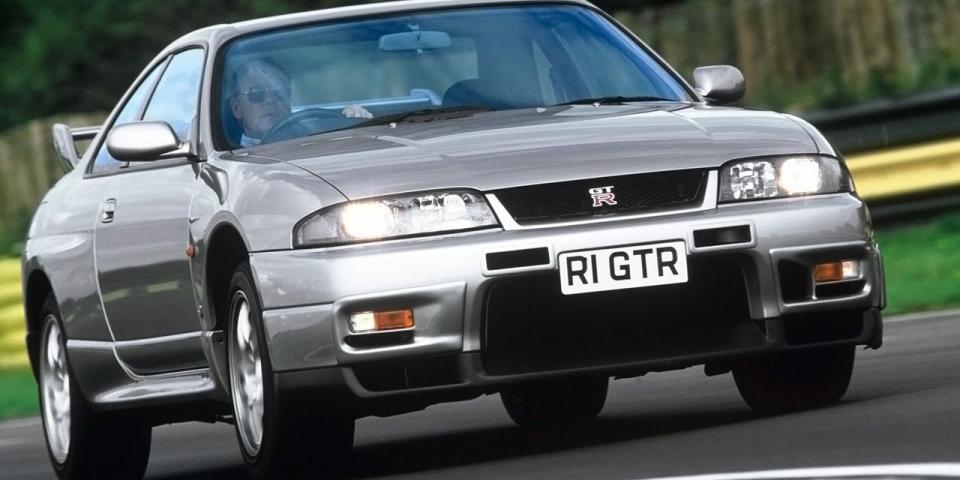
-More stability isn't a bad thing. Much of the R33's improved Nürburgring time comes from being less twitchy, with the rear end particularly improved to handle rough transitions. It still feels plenty raw compared to a modern car.
-The sedan is an homage to the original hakosuka. Built in 1998 by Nissan subsidiary Autech, the R33 GT-R sedan was built for the 40th anniversary of the original Skyline GT-R. As such, it had to have four doors. They're pretty rare, with just over 400 made.
-The R33 has a genuine racing pedigree, including Le Mans. The 1995 GT-R LM is a one-off built to satisfy racing homologation rules, and is stored at the Zama heritage garage. The racing variant took to the 24 Hours of Le Mans in 1995, where it battled F40s and McLaren F1s and ended up finishing in the top ten.
-There were a lot more variants for this generation. Despite a shorter production run than the R32, Nissan made all kinds of special edition R33 GT-Rs. There were three series of V-Spec this time out, as well as N1 variants and 188 Le Mans tribute cars. The best and rarest are the Nismo-tuned 400R, of which only 44 were made.
Of note:
1995 – The R33 goes on sale in August. Among the mechanical improvements are strengthened gear synchros. The R33 LM competes at the 24 Hours of Le Mans.
1996 – An R33 GT-R V-Spec cracks the eight minute mark at the Nürburgring.
1997 – The Gran Turismo racing game is released for Sony’s PlayStation. The in-game R33 GT-R can be purchased for 48,850 credits. Western audiences are able to “buy” their first GT-Rs the following year.
1998 – The R33 GT-R ends production with just over 16,000 vehicles produced.
Fifth Generation (R34)
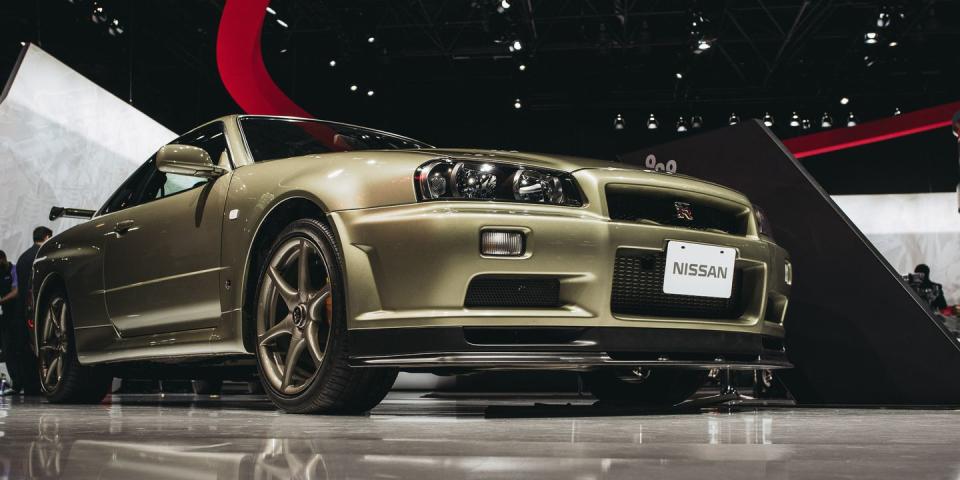
The R34 Skyline is the one Paul Walker made famous. It's arguably the best-looking modern Skyline GT-R, and featured several upgrades to make it a little more nimble than the R33. It was quicker around the Nürburgring, as was becoming the benchmark at the time, and even if legally importing one was a bit of a nightmare, at least you could download a virtual R34 for your PlayStation.
The total number of R34 GT-Rs produced was slightly lower than the R33 version, while the number of special edition variants grew to a near-incomprehensible list. There were again V-Spec versions, but these were joined by M-Spec and both N1 and Nür sub-variants. Nissan even built a handful of R34 GT-R versions for foreign markets including Hong Kong, Singapore, the U.K., and New Zealand.
Overall, the R34 GT-R is slightly sharper to drive than the R33, gets a six-speed gearbox, and has a more intelligent all-wheel-drive system. It's a really special-feeling car to drive, and huge horsepower levels via tuning are still very much on the menu. But expect to pay for the privilege; the R32 had a brief window of importability before prices shot up, but the R34 will have no such honeymoon period. As soon as they age past the 25-year mark, there will be a frenzy for these.
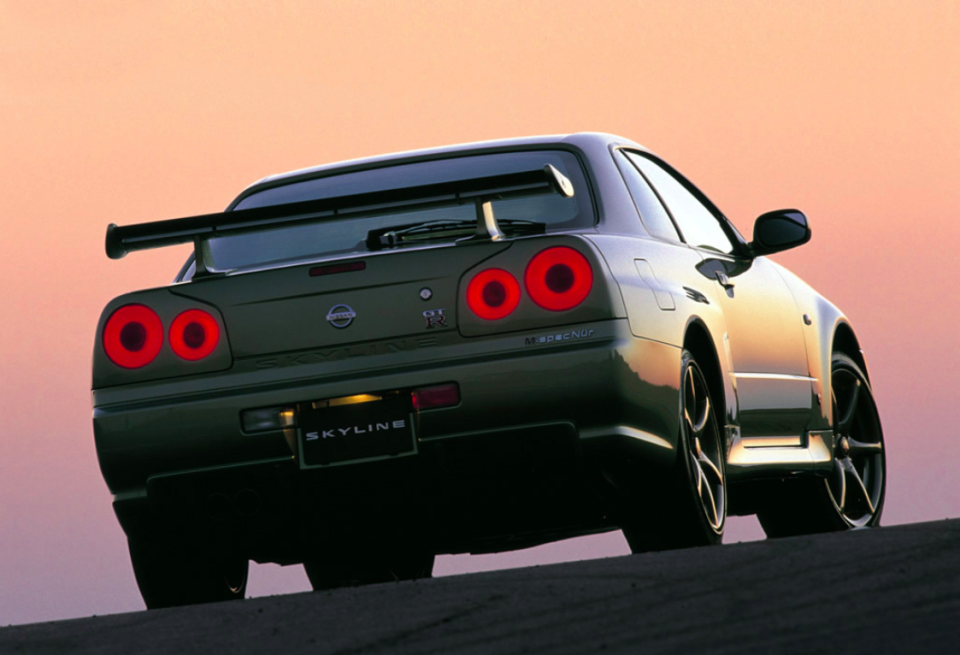
-There's more technology under the skin. The R33's ATTESA E-TS Pro is just what it sounds like: a next-level advance for the all-wheel-drive system. Not only can the on-board computers send power to the front wheels depending on wheelslip, but also manage power in the rear left-to-right via an active differential.
-M-Spec is a tribute to Nissan's chief engineer. Kazutoshi Mizuno started out at Nissan in the 1970s and was eventually assigned to a subdivision selling wheelchair-accessible cars. This led to a personal revelation: cars could be an extension of the body. Mizuno worked on the R33 Le Mans effort and would later be handpicked for the team that created the R35's exoskeleton of speed.
-It is technically possible to buy an R34 GT-R in the states now. Some of the GT-R's more rare variants are on the U.S. Federal Motor Vehicle Safety Standards Show or Display list. If you're willing to jump through all the hoops, you could have an R34 GT-R with a restrictive mileage cap. There are also the MotoRex R34 Skylines, which were grandfathered in as legal vehicles in an unusual decision. Essentially, an import company called MotoRex crash-tested and certified a few R33 GT-Rs before going on to sell R32s and R34s under the pretense that they were R33s. The Feds found out, but instead of seizing and crushing cars, elected to legalize those cars already sold.
Of note:
1998 – The R34 goes on sale in January of 1999. An optional multifunction display includes lap-timer, g-force meter, and electronic boost gauge.
1999 – An R34 GT-R bests the R33's Nürburgring lap time by roughly eight seconds.
2001 – Nissan introduces the M-Spec version, named for Mizuno. The cars are more luxurious than the standard variants, but also stiffer and quicker.
2002 – The V-Spec II Nür and the M-Spec Nür, the penultimate R34 GT-R models, are produced.
2004 – The ultimate R34 goes into production. Capable of cracking the 200 mph mark, the Nismo Z-Tune had a 2.8L engine, carbon fiber construction, and more than 500 hp. Only nineteen were built; they're now worth at least half a million dollars.
Sixth Generation (R35)
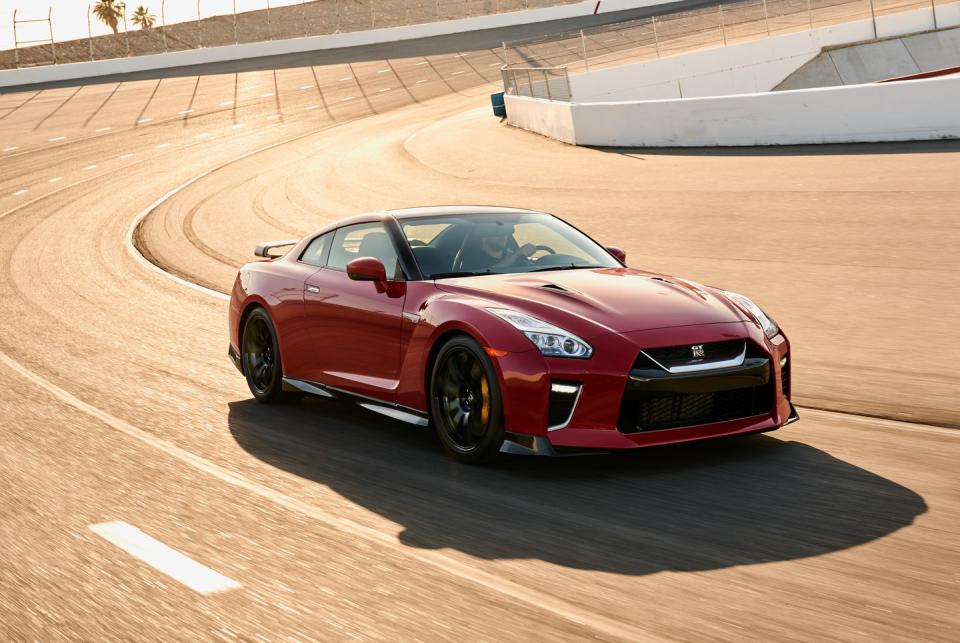
With the Skyline badge now applied to the cars sold in the North American market as the Infiniti G35 and G37, the GT-R badge found itself lifted from a special variant to a stand-alone car. The team assembled to create this new monster took it from Godzilla to Mecha-Godzilla, embracing not just twin-turbocharging and all-wheel-drive but twin driveshafts, a six-speed double-clutch gearbox, and a new twin-turbocharged V-6 engine. And it would be sold here.
If the original GT-R was a katana, and the R32/33/35 a firearm, then the R35 was a Gundam warsuit. Weight increased to 3800 lbs, but power levels matched that of the handbuilt Z-Tune R34. The first models were more road-going racecar than Nissan 911 Turbo, but the R35 GT-R became more polished over the years. It also got quicker, running a sub-3 second 0-60 mph sprint by 2011. A decade later, that's still impressive.
However, as a stand-alone model, the R35 didn't have to evolve as quickly. The first U.S. models arrived in 2008, and the 2021 version sold today doesn't really differ in its basic architecture. When we put the aging GT-R up against state of the art rivals in 2020's PCOTY, that didn't seem to matter.
Despite being the heaviest car in the running, the 3865-pound GT-R popped a 1:23.80, less than a second behind both the Porsche [911 Carrera S] and the Corvette [C8]. Nissan has improved the car almost every year since its 2007 launch, taking it from distant missile to talkative weapon.
-Zach Bowman, R&T
That particular GT-R was the pricey 600-hp Nismo variant, but the car still has presence as it ages. It's big and chunky, like a heavyweight's clenched fist, and packs a corresponding wallop. There can be a disconnect from the road because of the heft and size, but the way an R35 shreds tarmac is breathtaking. We'll be waiting a while for a car that's more Pacific Rim than this.
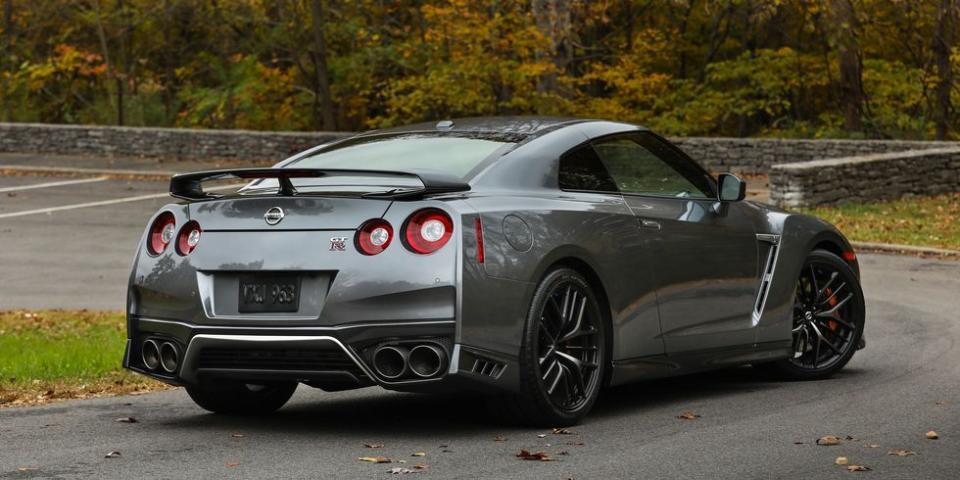
-Every engine is assembled by a small team. The GT-R was no longer powered by a straight six. Now, specialized craftsmen (in Japanese: takumi) sign each twin-turbo V-6 engine they complete, similar to AMG's ethos.
-The transmission and engine are separated. Instead of a rear-biased transmission, the R35's driveline setup now has twin driveshafts. Power is sent to the rear, then shunted forward to the front axle to help the car claw out of corners.
-PlayStation tech is now onboard. The R35's central multi-function display was developed with input from Gran Turismo publisher Polyphony Digital, Inc.
-MSRP climbed over the years. The first R35 GT-Rs were a performance bargain, at $69,850 for the base model in 2008. They only went up from there.
-That Nismo variant? Get ready to pay. The standard R35 GT-R is not quite a bargain at around $115,000, but the price seems fair. The Nismo version is $97,000 more expensive.
Of note:
2007 – The R35 arrives in the Japanese market. It's nearly identical to the GT-R prototype revealed at the 2005 Tokyo Motor Show.
2008 – The GT-R arrives in the U.S. in July. The Nürburgring lap time is a claimed 7:38, besting the Porsche 911 Turbo.
2008 – In the same year, the GT-R returned to the track in the GT500 class of Super GT racing. The chassis did well, with back-to-back championships in 2011 and 2012.
2009 – The GT-R Spec V returns, largely for the Japanese market only. It's slightly lighter, and gets a host of minor upgrades including carbon-ceramic brakes.
2012 – Power levels for the 3.8L twin-turbo V-6 rise from 485 to 530 hp.
2013 – The GT-R Nismo is unveiled at the Tokyo Motor Show. It does a claimed 7:08.68 lap around the Nürburgring. Nearly a decade later, the new 2022 911 GT3 is only 13 seconds faster.
2014 – The Nismo GT-R is the fastest production car up the hill at the Goodwood Festival of Speed. It is piloted by Jann Mardenborough, a young British racing driver who got his start through the Playstation-Nissan program GT Academy.
2019 – For the GT-R's half-century anniversary, Nissan unveils the wild, $1.2M GT-R50. Styled by ItalDesign, 50 of these 711-hp monsters will be built.
Collectability:
Essentially every non-R35 GT-R is a collectible, as can be seen from the sharp rise in R32 prices. If you've got a modest budget, you can be sure that buying even a standard R32 GT-R that's not a Nismo or other specialist version is a solid place to put your money. It'll likely continue to climb in value, especially if you pick up a shabby one and start setting it back on its feet.
However, if you're more the speculating kind, it's likely that the R34 will become the most collectible of all the GT-Rs. The early cars are interesting, but are aging out of the focus of the bulk of the market. Millions of kids grew up on the R32, R33, and R34, and that is where the future is. They'll continue to offer exceptional performance to keep up with modern machinery while delivering an analog driving experience that won't be matched by tomorrow's hybridized and battery-powered performance cars.
And since all R34s are going to be expensive, you might as well look for an unmolested rare one. A V-Spec variant is worth the premium over a standard car, as interest will likely continue to climb. The later Nür cars are already probably unaffordable to most buyers, but spend your time waiting for them to approach importability in research, so you know exactly what you're looking for.
Further, as prices rise on the modern GT-Rs, be aware that forgery will be on the rise as well. Rebuilt cars have already been floating around, so doing due diligence on a vehicle's provenance is well worth the hassle. A good potential source, rather than looking overseas, is up north in Canada, which has a shorter 15-year grey market.
The Ones to Get:
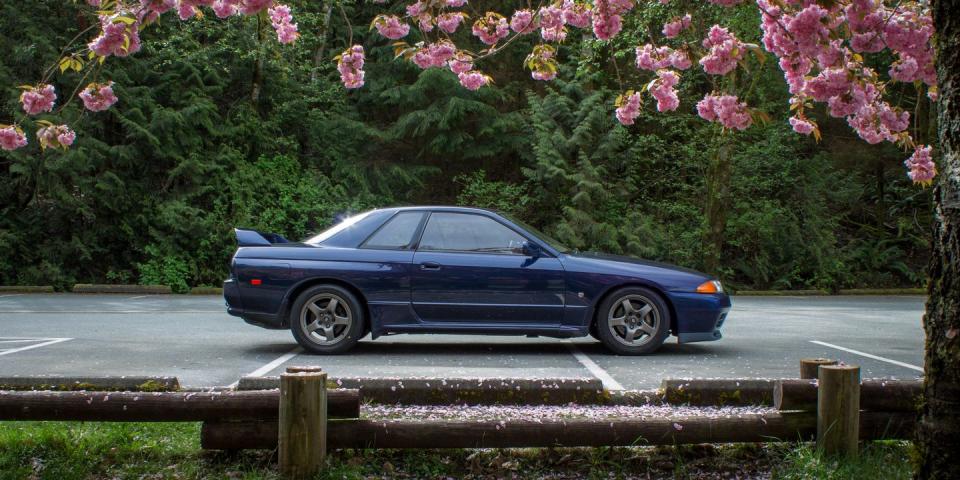
-Any unmodified R32 will fetch a premium, but then also hold that premium. The very last of the run has some reliability upgrades. Know your paint code numbers, as some rarer colors are more valuable.
-Modifications are the rule, not the exception. It's better to buy a clean car if you can, but unwinding a poorly tuned GT-R back to stock is a bit like buying a rescue dog: Often the reward is worth it.
-Don't overlook the R33's appeal. A standard R33 is a great driver's car, and values might drop a little with the R34's approaching importability.
-Early R35s are sensitive to maintenance deferral and are incredibly complex. Make sure a specialist checks out any purchase. New versions are expensive, but you can tune an early R35 to be just as quick and engaging as a much more expensive current GT-R.
Notable Issues / Problems
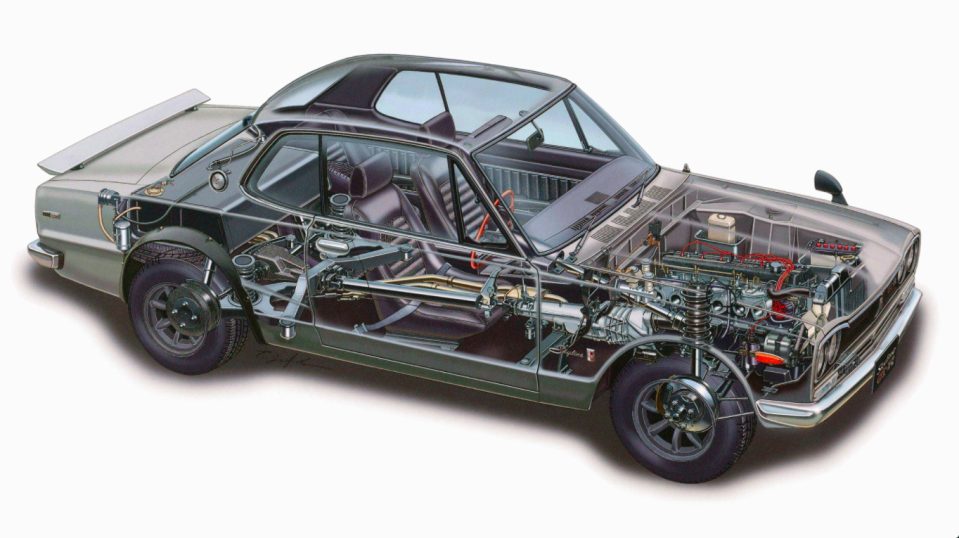
-Rust will eat a 1970s GT-R in a heartbeat, but has probably already done so to unprotected cars by this point. Anything left will be well preserved. It's more likely that you'll be trying to avoid a fake hakosuka GT-R rather than chasing down mechanical problems.
-Rust is an issue for R32s. In particular, the area around the rear wheels and rear quarters can start to bubble. Water can also leak in and pool if the weatherstripping has perished.
-R32 interiors are pretty basic, but can suffer sun damage pretty easily. It's arguably easier to fix mechanical issues than cosmetic problems.
-Oil pressure can also be an issue in R32s. Later cars and the R33 got a wider collar for the gear that drives the oil pump. The sending units can also go bad here.
-The ceramic blades used in the turbos are lighter than steel, but they can break with catastrophic results if the boost pressure has been turned up.
-Nissan's HICAS rear-wheel-steering is, as noted, often locked out by drivers. This is sometimes done for feel, but can also be covering up a problem.
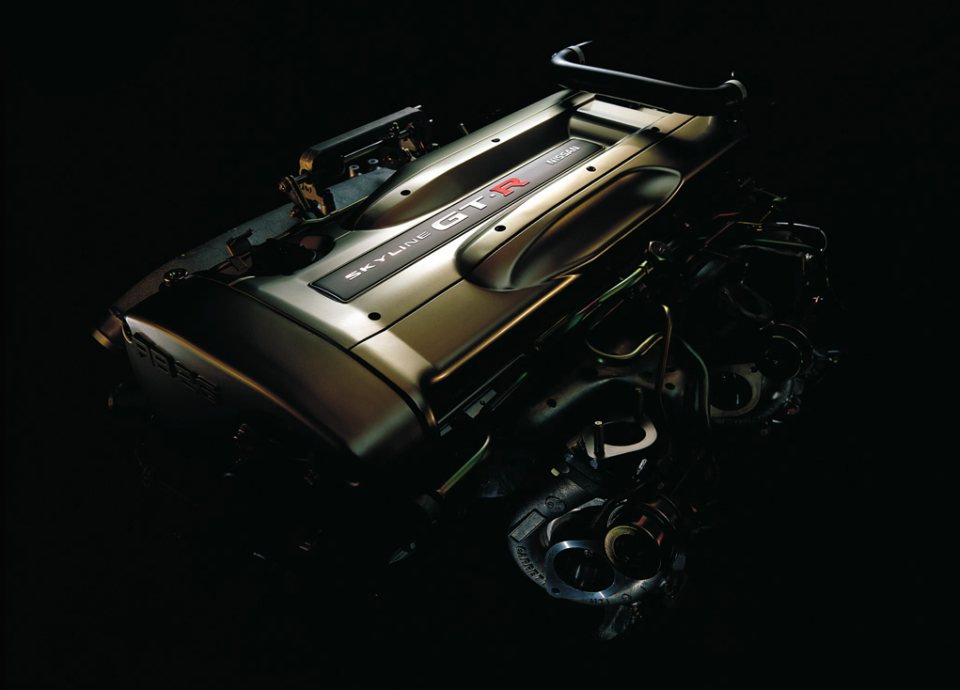
-Big power and all-wheel-drive is hard on the transmission with an unsympathetic driver. Watch for a grinding third gear, and for worn synchros in fourth and fifth. In the R34's six-speed, first gear can start to pop out.
-Changing the gauge cluster out for a higher-speed version is pretty common on all R32-34 GT-Rs. The upgrade can be problematic for establishing mileage.
-Electrics are mostly good, though the R34's multi-function display can give up the ghost.
-The R35 has a large crop of potential problems, including the somewhat notorious launch control. Nissan denied warranty claims for what they considered abusive launches in the early cars, and the GR6 transmission does not handle abuse well. It’s a replacement unit, unless you can find a specialist shop to work on it.
-Up until the 2015 year, R35 GT-Rs can have headlight issues with trapping moisture.
You Might Also Like

 Yahoo Autos
Yahoo Autos 